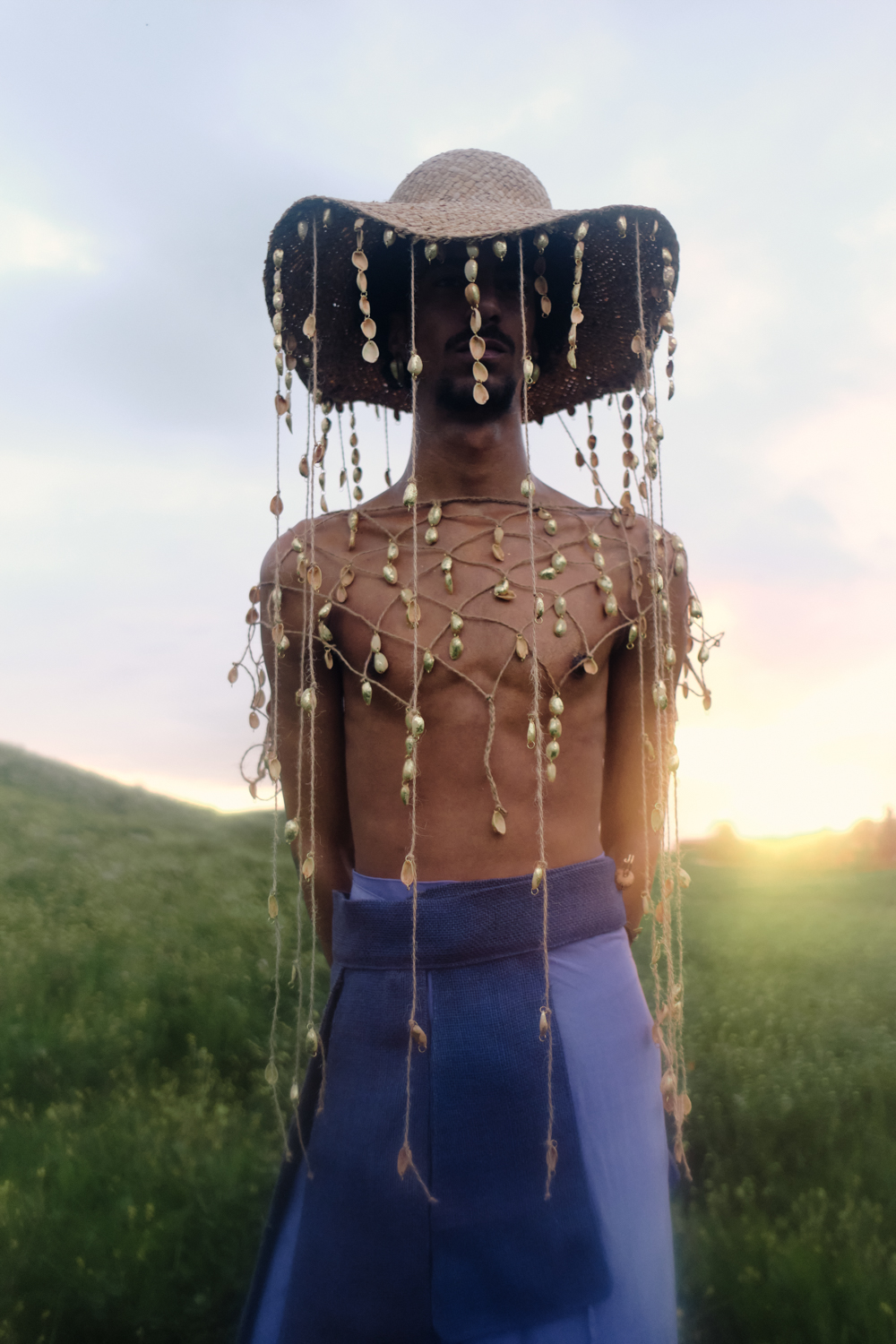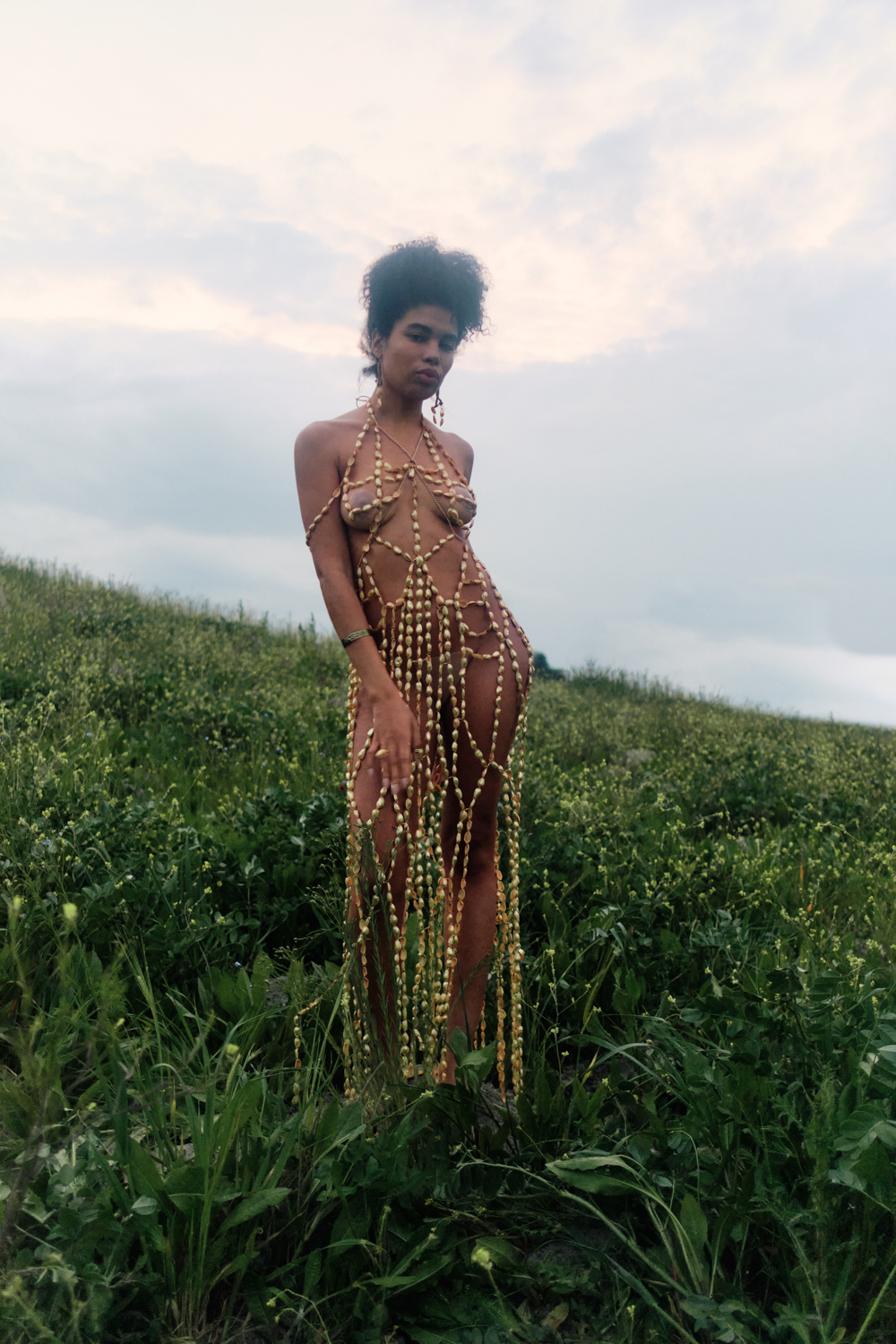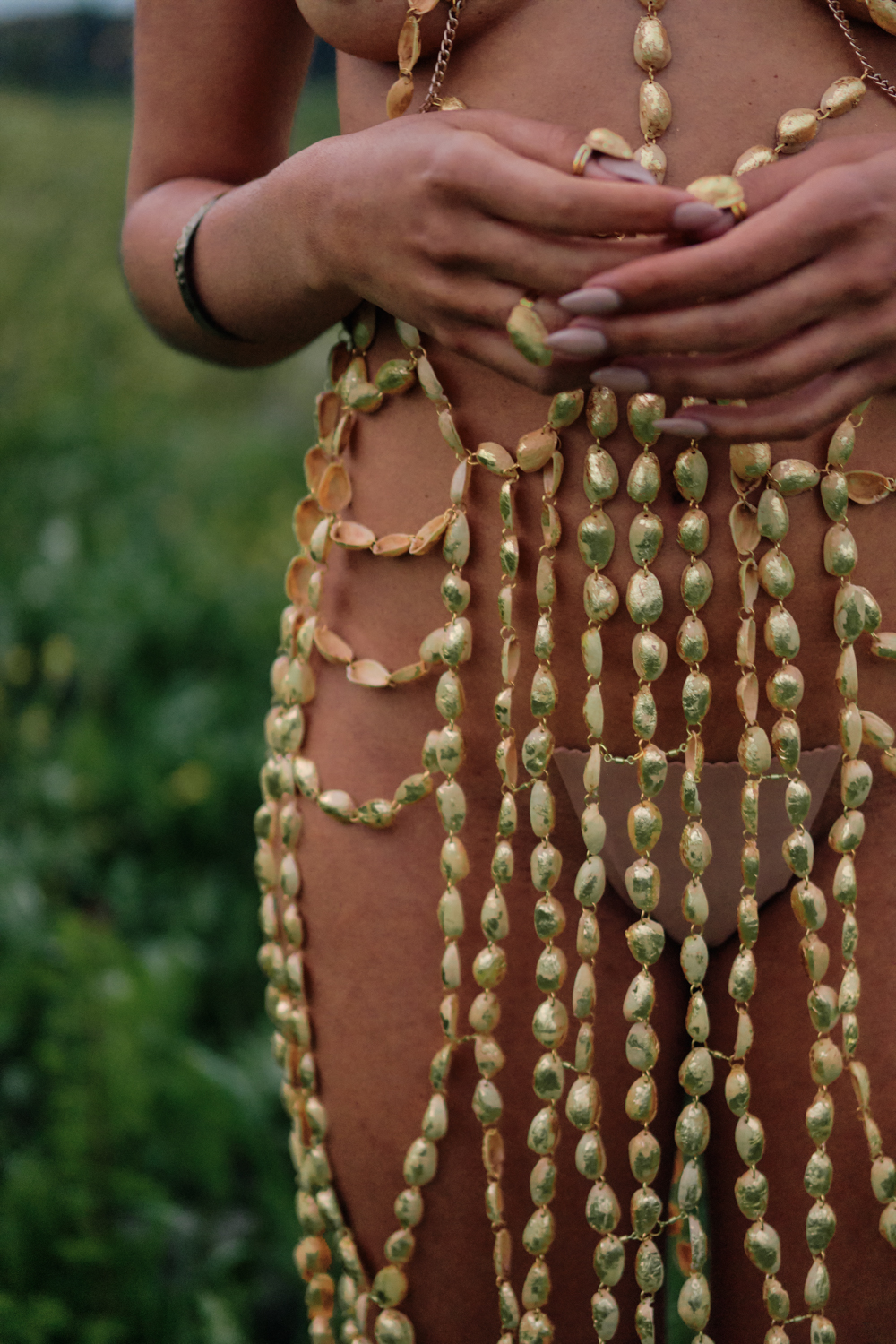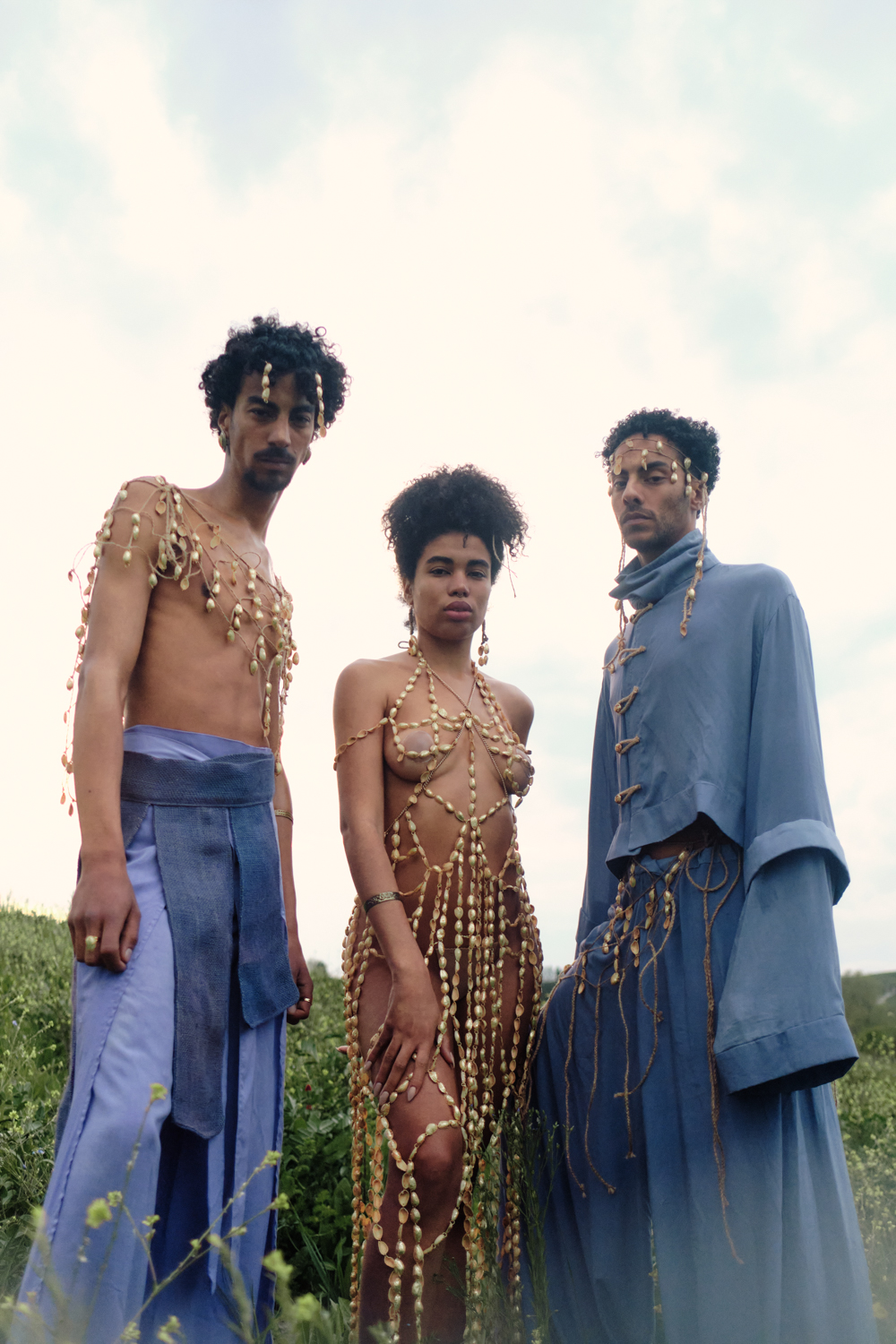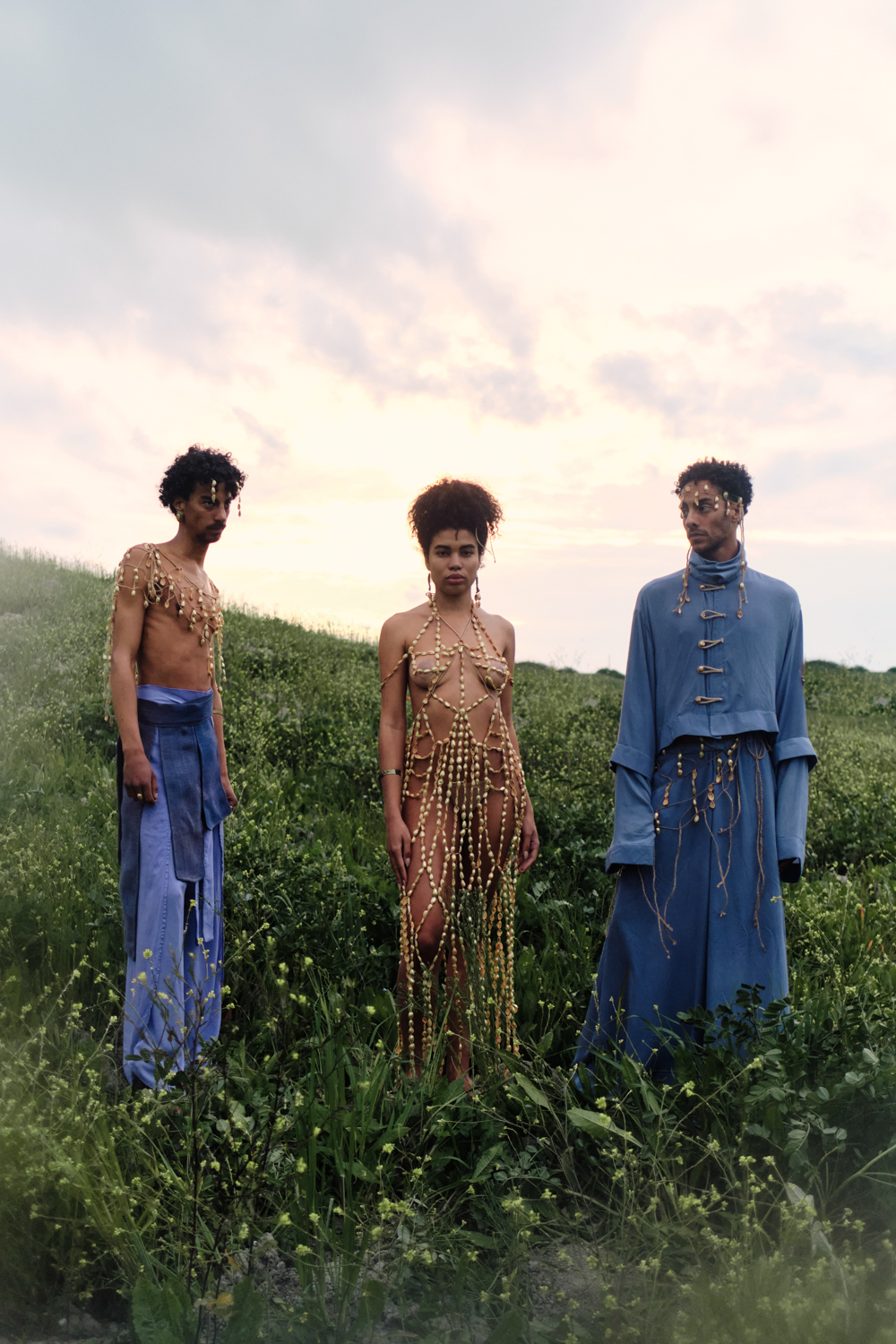by Cosimo Baldi
Transforming what is used into something poetic is a rare skill that few truly possess, and when the human eye has the pleasure of witnessing the realization of this process, that fills the soul of the observer. With a decidedly unique approach, Lucanian designer Fiorenza Pace shows us how to transform waste into light.
Where did your decision to specialize specifically in the fashion field came from?
It all stems from the fact that I come from a land (Basilicata) that is full of nature and so much inspiration. I have always tried to create the “anti-fashion,” a vision only mine that could create something eternal, transcending traditional trends, and could stay in people’s hearts. As already mentioned, I was born in a land with little job opportunity in fashion, and with a heavy heart, I had to leave for Florence, which was the opportunity that gave me the push to realize my dream. Mentally, I have never left my homeland, and it remains my greatest source of inspiration. It will always be in my heart, and I want to bring a bit of that nature, forgotten due to modern consumerism, through my art, discovering new things but remembering the values our grandmothers always taught us. All this led me to enroll at the Accademia Italiana in Florence, where I graduated.
Visually speaking, your graduation collection is very particular; can you explain what it consists of exactly?
In my latest collection, there are three outfits totally, one of which was created exclusively by working with empty pistachio shells. The collection is called “Gocce di luce” (Drops of Light), born from my idea of creating something that recalls jewelry design using food waste, processed in a special way and then gold-plated to give it more light and brilliance. I started collecting them four years prior and ended up hand-“sewing” over 1500 shells together. I chose this specific food because I’ve always perceived it as a sort of “vegetable shell.”
Didn’t you think they could deteriorate after four years of disuse?
They have very resistant preservation, but towards the end of the four years, I found a gold-colored acrylic enamel that allowed me to keep them sturdy and maintain their shape. After the first fitting test, I loved the result and integrated the shells into all the looks of the collection.
Regarding the parts of the looks that do not include the shells, what materials did you choose and why?
Besides waste, I also wanted to use natural-origin fabrics, particularly bamboo viscose (also present in the filaments binding the pistachios together), which I dyed myself to achieve a lilac color. My choice is based not only on a principle of sustainability and environmental sensitivity but also as a call to my personal heritage belonging to the natural world. I felt compelled to create something new and precious; I think it’s everyone’s duty. A new idea can also arise from products left in a wardrobe or abandoned by our grandparents; the key lies in always searching for something new from the old. This brings me to my thesis, which I conducted almost like sociological research, studying various tribes around the world that see a synergy with nature because living in it, they find an inexhaustible source of resources. It’s a project I want to carry on in the future. Aesthetically, I wanted the models to feel free, almost as nature makes us feel, reworked in a gender-fluid key, adaptable to every body type. The soft silhouettes I wanted to give the garments, along with the pistachio nets, represent more than a detail. They remain delicate and not exploitable daily, but a jewel to be treated as such, giving the entire project a precious yet calm, soft, and free aspect.
Drawing inspiration from her roots and the varied natural wealth of her native land, Fiorenza Pace takes us into a bucolic vision, almost reconnecting with the original state of society, applying her manual and technical skills to create garments that are not only fully sustainable according to today’s fashion market demands but also enhance the body without slipping into nudity or vulgarity.
The first look of “Gocce di luce” is a lilac-colored ensemble consisting of an oversized jacket with evident oriental references and baggy pants entirely made of bamboo. The outfit is completed with decorations made with pistachio shells tied at the top of the pants and around the neck with a sort of diadem of the same shells, wrapping around the model’s head like a natural crown, giving him the appearance of a noble from a wild and beautiful land.
The second look brings us a step down in the social pyramid of the aforementioned tribe, as the model wears a crop top made with natural accessories resulting from Fiorenza’s ingenuity and pants made from scraps of fabric, a sort of hand-crafted pant-skirt, with a final touch of a fisherman-like hat adorned with small shells.
The third and final look of this collection is the most striking. The model appears as an ancient goddess covered only by a net of shells, which, however, do not convey a sense of nudity or promiscuity but rather a feeling of power and light, with tranquility that only Mother Nature can provide.
Pace’s brand, FlowPwer Lab, started as an artisanal tailoring project aimed at transforming waste, vintage, and 100% natural materials into something that transforms the ordinary into rarity while respecting the earth.
Thus, Fiorenza’s mission seems to inspire people to conceive a more positive vision of the world and to see beauty in everything, in every scrap, in every material that can be transformed into a precious resource to make the world a better place.
This designer, with her always positive and cheerful temperament, yet attentive to detail and technique, can only inspire curiosity. It can be confidently stated that a very bright future is predicted for her, and the fashion world cannot wait to see her bloom.
